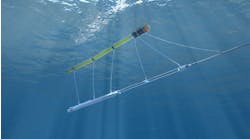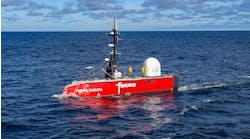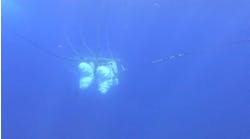Offshore staff
PARIS – CGG has signed an R&D collaboration agreement with Geoptic to jointly research and assess a novel borehole solution for monitoring the spread of CO2 in subsurface storage sites for carbon capture and storage (CCS).
The agreement focuses on developing a new version of Geoptic’s DIABLO muon tracking tool specifically for CCS applications. The company deploys DIABLO as part of its use of cosmic ray muons to passively and non-intrusively image the internal structure of objects.
Geoptic is developing muon sensors suitable for use down boreholes for the imaging of CCS projects several kilometers underground, as they are said to be useful for environmentally sensitive areas. Application of these sensors could expand to include surveying construction sites, structural monitoring, mining, and other subsurface monitoring arenas.
According to CGG, this collaboration is part of its initiative to further technologies that advance the measurement, monitoring, and verification of CO2 storage. The company will draw on its geophysical imaging and integrated geoscience solutions to process and model the data acquired by Geoptic’s downhole tools. The collaboration is focused on delivering a new continuous long-term subsurface monitoring solution that will reduce the risks associated with CO2 leakage and enhance the safety of CO2 storage projects.
Dr. Chris Steer, co-founder and managing director of Geoptic, said: “Geotechnical muon instrumentation offers a unique view on fill and migration measurements for underground CO2 storage.”
Peter Whiting, senior vice president, Geoscience, EAME, CGG, said: “Our advanced imaging technologies and integrated workflows play a valuable role in supporting CO2 monitoring by delivering critical information for project optimization and meeting regulatory safety requirements.”
05/27/2021



